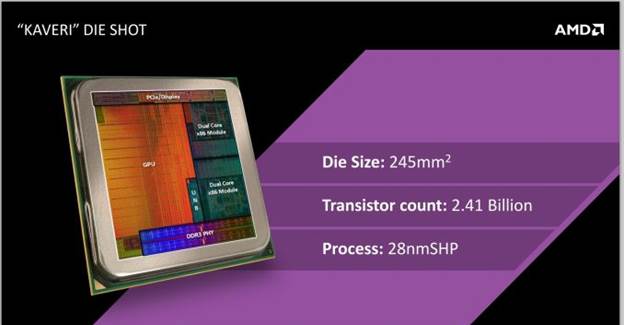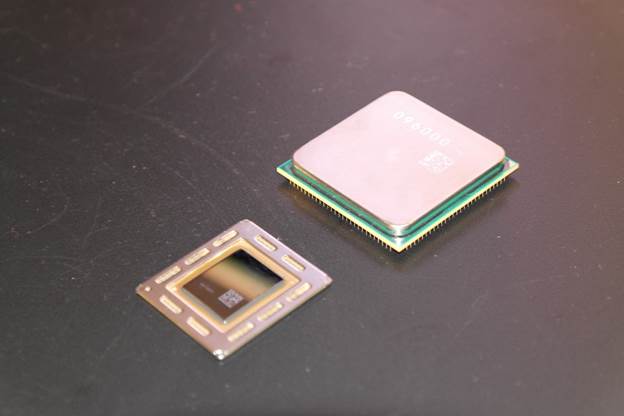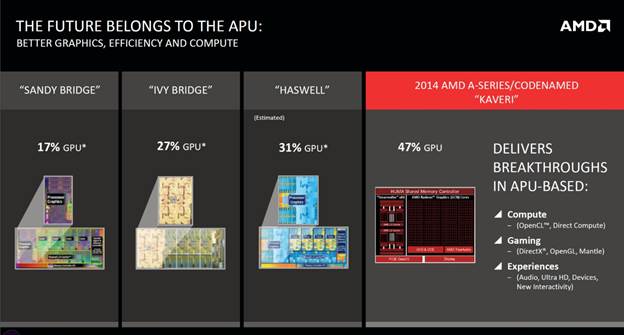Set to succeed both the Trinity and Richland APUs, AMD’s
Kaveri further unifies both processor and graphics cores.
Intel may be the current dominant
player in the CPU space, pushing CPU compute performance as well as the
boundaries of integrated graphics capabilities with its Core processor family,
but AMD’s approach to the unification of CPU and GPU cores is proving more
holistic. The release of their third-generation APU architecture, codenamed
Kaveri, is a testament to this. Positioned as an ideal choice for gaming
platforms, both CPU and graphics have been updated for better performances,
with a much deeper level of integration that’s blurring the lines between CPU
and GPU cores.

Kaveri
has been the aim for AMD for several years,
it's actually the whole reason the company bought ATI back in 2006.
Kaveri Examined
Launched in early January, one of
the major changes introduced with Kaveri is its shared unified memory
architecture named hUMA (Heterogeneous Unified Memory Architecture). hUMA
provides a common memory space that both processor and graphics cores of the
Kaveri APU can access, giving the GPU core the ability to read from, and write
to, the same data that the CPU is using, and vice versa. This feature will also
reportedly enhance the manner in which supported software interacts with the
memory space.

Kaveri
is AMD’s 3rd generation Bulldozer architecture on a half-node process shrink
Besides sharing such a space,
there are improvements made to the processor and graphics cores. The processor
compute cores currently feature the next-generation Steamroller x86
architecture, which emphasizes performance at lower power. In addition, the new
microarchitecture also allows for new instruction sets to be processed, marking
an improvement from the previous generation Bulldozer architecture. The
graphics engine core has also been updated with Graphics Core Next
architecture; the same as found on the Radeon R9 290X and R9 290, codenamed
Hawaii.
The implementation of hUMA in the
Kaveri APU takes AMD another step closer to the goals behind their HSA
(Heterogeneous Systems Architecture) concept, where CPU and GPU cores can work
coherently together. In Kaveri, CPU and GPU cores are grouped as a whole and
known as “compute units”, where applications can use to run processes. Both
compute units are equal, each being able to create and dispatch their own
instructions. As a result, applications can theoretically tap the parallel-
computing prowess of the GCN GPU cores, while leaving tasks that require serial
processing for the x86 processor cores. The caveat is of course, not all
applications can take advantage of the GPU for parallel processing and can only
use the x86 cores like a regular processor. The task then falls onto developers
to code for the new architecture.

AMD
refers to this as an "APU optimized" process,
somewhere in between what a CPU and what a GPU needs
Kaveri also features support for
PCIe 3.0. This means the data transfer rate between the APU and a paired
discrete graphics card is increased to the theoretical maximum of 8.0GT/s;
instead of being capped at 5.0GT/s of its predecessors on PCIe 2.0. Besides
speedier communication on the upgraded bus, the Kaveri APU has another two
features that will appeal to gamers. With support for AMD TrueAudio technology,
game developers are able to create an immersive gaming atmosphere, through the
use of positional audio that is rendered in real-time. The new audio technology
is able to handle multiple audio streams simultaneously, and AMD even claims
that all these effects are accomplished without taxing the CPU cores
unnecessarily. Other gaming features that made it into Kaveri include AMD’s
Mantle Application Programming Interface (API). This allows game developers to
tap into the GCN-based graphics cores to unleash the full potential of the
graphics engine efficiently. Developers also won’t have to waste time
optimizing for different platforms as Mantle-capable titles have already been
optimized at the hardware level.